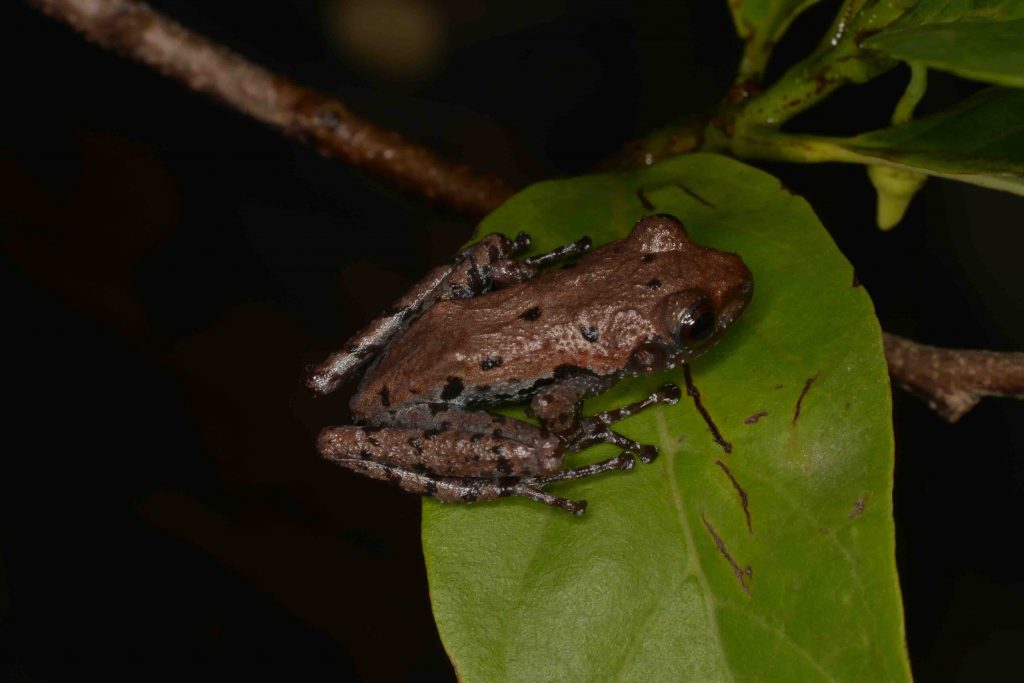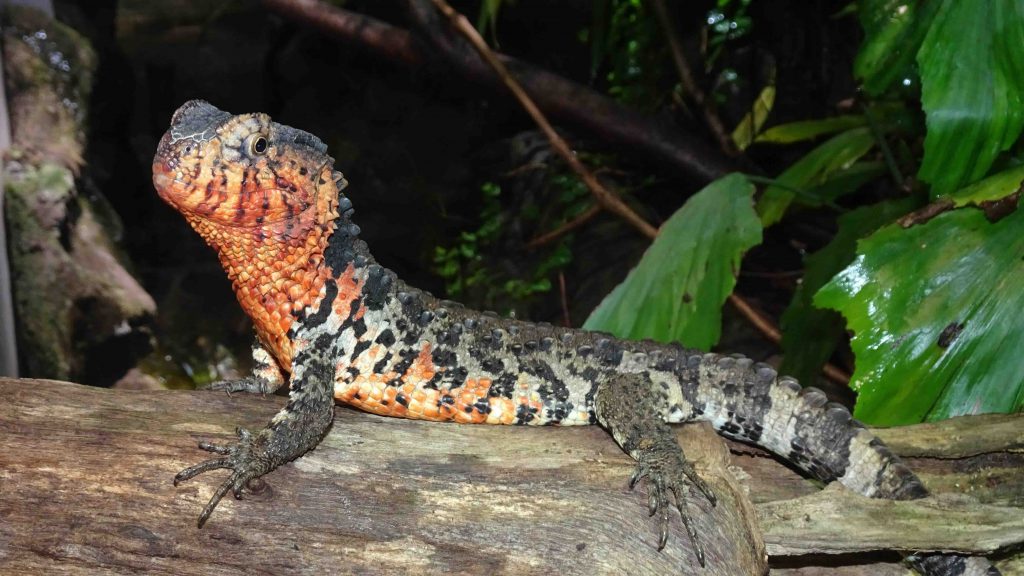Hai BT
Tay Yen Tu, a sacred land rich in cultural and spiritual heritage, is also home to many rare species of wildlife. Joining researchers from the Vietnamazing campaign, I embarked on a nocturnal expedition through Tay Yen Tu’s primeval forests and witnessed the extraordinary yet fragile beauty of animals on the brink of extinction.
We set off at dusk, our flashlights cutting narrow beams through the dense canopy along a stream. Gradually, we heard signs of wildlife: the resonant calls of insects and frogs mingling with the soft murmur of running water.

Unlike a normal hike or camping trip, this night trek unfolded in near silence. The quieter our steps and breaths, the better our chances of encountering wildlife. In the deep forest’s darkness, our flashlights lit only a few meters ahead, making each step uncertain, as nocturnal creatures could appear at any moment. On the damp earth, Associate Professor Dr. Nguyen Thien Tao – Vietnam’s leading expert on venomous snakes – pointed out a green pit viper poised to strike, its deadly beauty captivating. Leeches clung to the vegetation, forcing us to constantly check our arms and legs. Yet these challenges only heightened our excitement, for the deeper we ventured, the more wonders the forest revealed.
As time went by, the air grew colder and stiller, and the forest slowly came alive. Spotting a Vietnamese crocodile newt (Tylototriton vietnamensis) was a highlight, this rare amphibian’s rough, dark body marked by vivid orange-yellow streaks along its tail and toes. Professor Thomas Ziegler of Cologne Zoo in Germany explained that despite their striking appearance, these newts have gentle natures , and so suffer from being collected for cross-border illegal pet trade, driving them toward extinction.
Along the stream, mossy frogs (Theloderma) blended seamlessly into their surroundings. More than a symbol of biodiversity, they embody nature’s remarkable adaptability. Vietnam is home to 24 of the world’s 28 known species, 17 of which were first discovered and described here.

While photographing these camouflaged creatures, I suddenly felt Dr. Tao’s firm grip on my shoulder – a signal to freeze. Above my head, perched on a branch, was one of only about 300 remaining Vietnamese crocodile lizards (Shinisaurus crocodilurus vietnamensis). Evolving over 100 million years, this reptile resembles a miniature crocodile with jagged scales, its markings glowing with brilliant colors. The researchers carefully captured it, implanted a tracking chip beneath its skin, and released it back into the wild. These chips help scientists monitor the lizards’ movements and habits, providing vital insights for conservation.
As we continued deeper into the forest, we spotted two more of these rare lizards. At 4 a.m., our journey ended with the group huddling around a flickering kerosene stove, slurping instant noodles. At that moment, I felt what the researchers must feel daily – an unshakable passion for the wilderness, free of fear, only filled with awe.

Step by step, I realized that Vietnam’s wild beauty lies not only in its landscapes but also in its extraordinary creatures. Yet under the twin threats of climate change and human destruction, these species face imminent extinction. More than an adventure, this experience was also a solemn reminder of our shared responsibility to safeguard biodiversity and preserve nature’s priceless gifts for future generations.
The “Vietnamazing” conservation campaign showcases Vietnam as a unique biodiversity hotspot, while connecting conservation efforts, from in-situ and ex-situ preservation to habitat restoration, scientific research, education, fundraising, and public outreach. The campaign is raising awareness of threatened species and working to ensure their long-term protection together with safeguarding their habitats.










